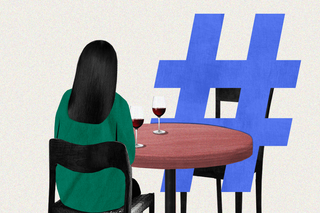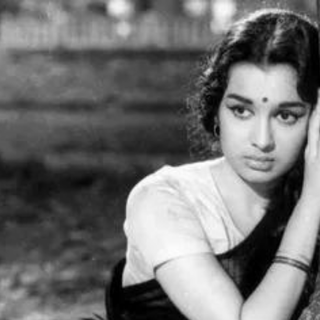
The Problem With Packaging Healthy Dating Practices as Internet Trends
Self-awareness and healthy emotional boundaries are the foundations of a good relationship, not a passing fad.

The dictionary of modern dating can never be accused of falling out of date. Dating behaviors — online and offline — are always alert to merge with language; identifying patterns and bestowing them with kitschy and clickable words. There was ghosting (we know this one by heart), breadcrumbing (keeping someone on the hook), shelving (using work as an excuse) — all noxious tendencies of leading someone on. Then came the pandemic, and with it “orbiting“; “apocalypsing”; “Elsa’d” (yes, after the famous Disney ice queen); “flatlining.” A full inventory of these words exists in the recesses of the internet for those who seek inspiration.
It is tempting to have dating trends —to create a lexicon of them by giving a name to almost everything, especially toxic behaviors. These trends are not only a reflection of our collective behavior, but they also exist “because they satisfy some very basic needs in all of us: the need for communicating social identity and the collective need for making sense of the world,” said Maria Mackinney-Valentin, a trend scholar at the Danish Design School in Copenhagen. To call something a trend is also to highlight a pattern of collective behavior people seem to be following at this stage, without carrying any longevity.
But what happens when we make trends out of good dating habits — the ones rooted in honesty, authenticity, respect, and prioritizing one’s boundaries?
Take these predictions about what dating “trends” may be popular in 2022, the third year of the pandemic. There’s “hard balling” — you know, when someone is confident enough to voice what they want from someone (casual, long-term, have what you will). Basically, not settling for less than what they want or deserve. There is “conscious singledom,” someone who thinks it’s okay to be alone for a while. And my personal favorite: “slow dating,” a consequence of people being more aware of their priorities. “People taking the time to get to know each other and build a connection before deciding if they want to pursue the relationship or meet in person,” as Bumble described it. At first glance, they all sound like extremely healthy dating etiquette.
These are valuable and desired ways to go about testing the romantic waters. But constantly turning positive behaviorial patterns into “trends” trivializes authentic dating to an extent. In other words, the “hashtag” around it lends an air of impermanence — as if to say the self-awareness and emotional boundaries, dear ones, are fleeting things that will have their moment in the sun and then go away. When, in fact, they deserve to be more than just a phase.
Arguably, an entirely new language to signify today’s dating culture is not a bad thing. If toxic behaviors get a name, so should healthy dating patterns to explain the new pandemic reality which may be different from the recent years. But, that’s the thing: even trends are always changing.
Related on The Swaddle:
Tindstagramming Is A Creepy Online Dating Trend That Needs To Stop
The worry is also about ubiquity. “…if there is one thing that watching trends has taught us, it’s that at precisely the point at which something becomes ubiquitous, that something is no longer a trend,” marketing professor Jonah Berger said to NPR. In other words, “merely calling something a trend or noting its trendiness may also decrease its allure or hasten its decline.”
In a 2009 study, Berger found that cultural tastes that are adopted quickly are “likely to die faster.” While this particular research focused on fashion brands and products, the overlying pattern with trend-spotting is that people quickly tend to become wary of that “it thing.” They avoid things “with sharply increasing popularity because they believe that they will be short-lived.”
While there’s some benefit to giving a name to toxic patterns in relationships, clubbing the same language trends to healthy dating habits risks conflating the intention.
What is also circumspect about these internet tides is they misrepresent the actual dating habit. Take shelving. The assumption is people use work as an excuse to not meet someone; but what if someone is genuinely busy? Work does get in the way of dating, that shouldn’t be a surprise. One need only parse through the internet for five minutes to find stories of people struggling to make time to invest in relationships particularly during work from home.
There’s another trend that got popular in 2019, one that cautioned against a partner keeping you from meeting their parents or friends. There can be several implications here: a) they may be embarrassed, b) they may not be serious about the relationship, c) they may not be close with their families or have toxic parents, d) they would like to exercise their choice and emotional boundaries. It can be any and all of the above — but this trend would claim it to be either one or the other, with no in-between. The problem about trends, in general, is also thatan audience buys into them uncritically. This is how the market has always worked, but it’s unsettling when the market we speak of is love and companionship.
Plus, it’s not like “ghosting” or “slow dating” are by-products of the modern age only. Dating apps keep releasing lists and curations of their predictions for a new world, but there’s hardly anything new about taking time to get to know the other person. Marketing lingering dating habits as “old-fashioned concepts make a comeback” carry one flaw: they signify that wanting to be “single” or taking it “slow” are the old ways.
“I think the fact we have to give names to all these specific behaviors misses the point of the wider pattern that they’re part of: a growing general lack of decency and communication in modern dating,” as Metro noted. The way to fix this could then take the road less traveled, one where the focus is on oneself and not following a #trend.
Saumya Kalia is an Associate Editor at The Swaddle. Her journalism and writing explore issues of social justice, digital sub-cultures, media ecosystem, literature, and memory as they cut across socio-cultural periods. You can reach her at @Saumya_Kalia.
Related


‘Euphoria’ Is the Wokest Show to Fail the Bechdel Test
